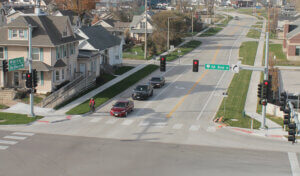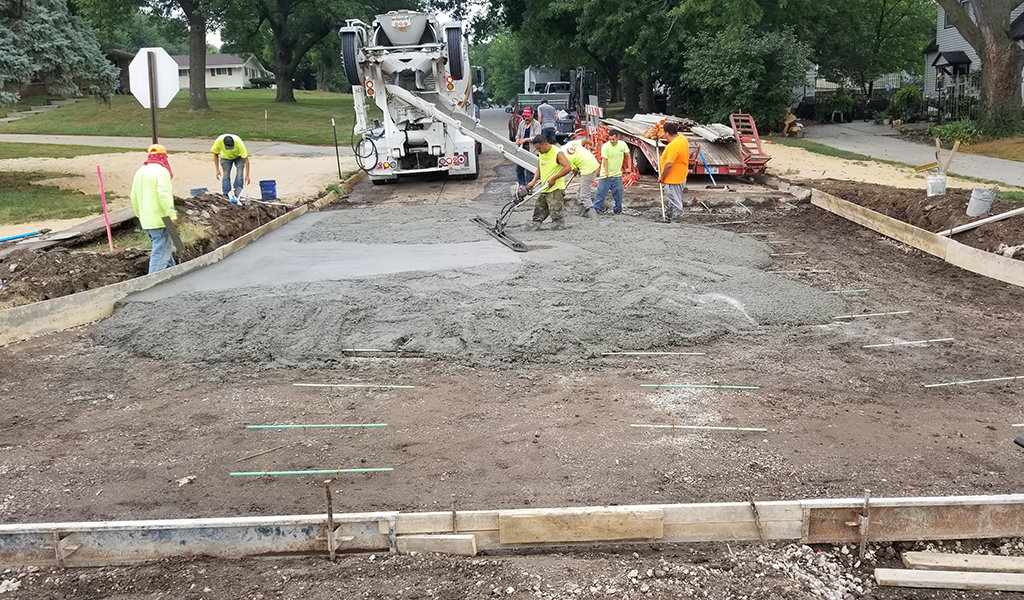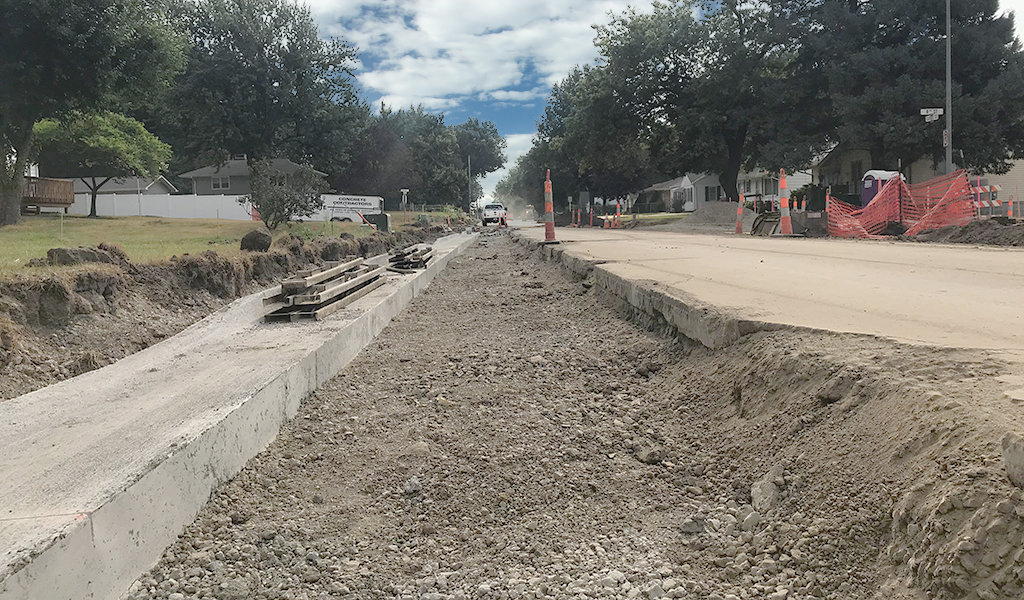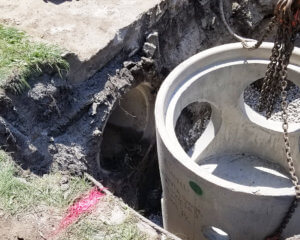
Busy Community Street Requires Extensive Repairs
Located just off the Highway 5 bypass, the community of Carlisle provides small-town living with access to the Des Moines metro area a short 20 minutes away. Like a lot of towns of a similar size, spending on infrastructure upkeep and repair accounts for a sizable portion of the town’s budget. Any cost savings that can be found for these types of projects are a welcome relief for community leaders.
Such was the case when it came time to make repairs to a 5 block section of School Street. School Street is primarily a residential roadway running from the Frontage Road to the Carlisle School campus to the east. A few commercial businesses operate on the west end of the street. Because of the access to the campus, School Street sees high traffic usage during peak periods. The city retained Snyder & Associates to explore repair options for replacing the cracked and deteriorated street, while also keeping financial considerations at the forefront of the planning process.
Pavement Analysis Determines Scope of Roadway Improvements
As part of the design services provided by our firm, it was discovered that the storm sewer system that serves the west end of the project area had substantial deficiencies. The poor condition of the system had led to numerous cases of stormwater backing up into residences during periods of heavy rain. An upgrade to a portion of the existing storm sewer system was necessary to minimize the recurring flooding issues, as well as new manhole lining to reduce infiltration.
A geotechnical pavement analysis was completed on the existing roadway. This included obtaining pavement cores and performing an analysis of the subbase and subgrade. The results determined the base materials were stable and in quite a good condition on the east end of the roadway, while the western portion of the project area was found to be in poor condition. With that in mind, it was determined that a complete reconstruction of the roadway would be required for the west end section. The east end, however, would receive a cost-savings “crack and seat” method, followed by a Hot Mix Asphalt (HMA) overlay.
“Crack & Seat” Roadway Rehabilitation Method Limits Disruptions & Reduces Expenses
The crack and seat method is designed to reduce reflective cracking in an HMA overlay by minimizing the movements in the underlying concrete. The crack and seat process involves cracking the existing pavement into pieces small enough to reduce horizontal movement, but large enough to maintain structural integrity. This is most commonly performed using a gravity, guillotine-type breaker. After seating the pieces into the subgrade using a weighted roller, HMA is then used to overlay the roadway.
There are two primary benefits to using the crack, seat, and overlay process. First, since the existing pavement doesn’t need to be removed, the roadway can be kept open to local traffic during most of the process with minimal disruption to residents. The storm sewer, curb, gutter, and sidewalk replacement work only requires minimal periodic closures to individual residential driveways. Our team provided constant feedback to the city staff to help keep the residents along the corridor updated on the progress. Second, compared to a full street pavement tear out and replacement, the crack, seat, and overlay method provides a substantial reduction in the project’s overall cost.
Challenging Staging for Street Rehabilitation & Utility Coordination
Because of the scale of the project and the number of residences impacted, the work was divided into two separate phases, starting with the complete reconstruction at the west end. The crack and seat process on the east end of the project area was completed next. Breaking the construction into two phases allowed for better coordination with the multiple utilities in the project zone, as well as minimizing the impact for local residents.
The School Street rehabilitation was one of the first of several planned corridor projects in this section of Carlisle. Because of the success of the crack, seat, and overlay process used on this project, it’s also being considered for several other street rehabilitation projects in the area.






